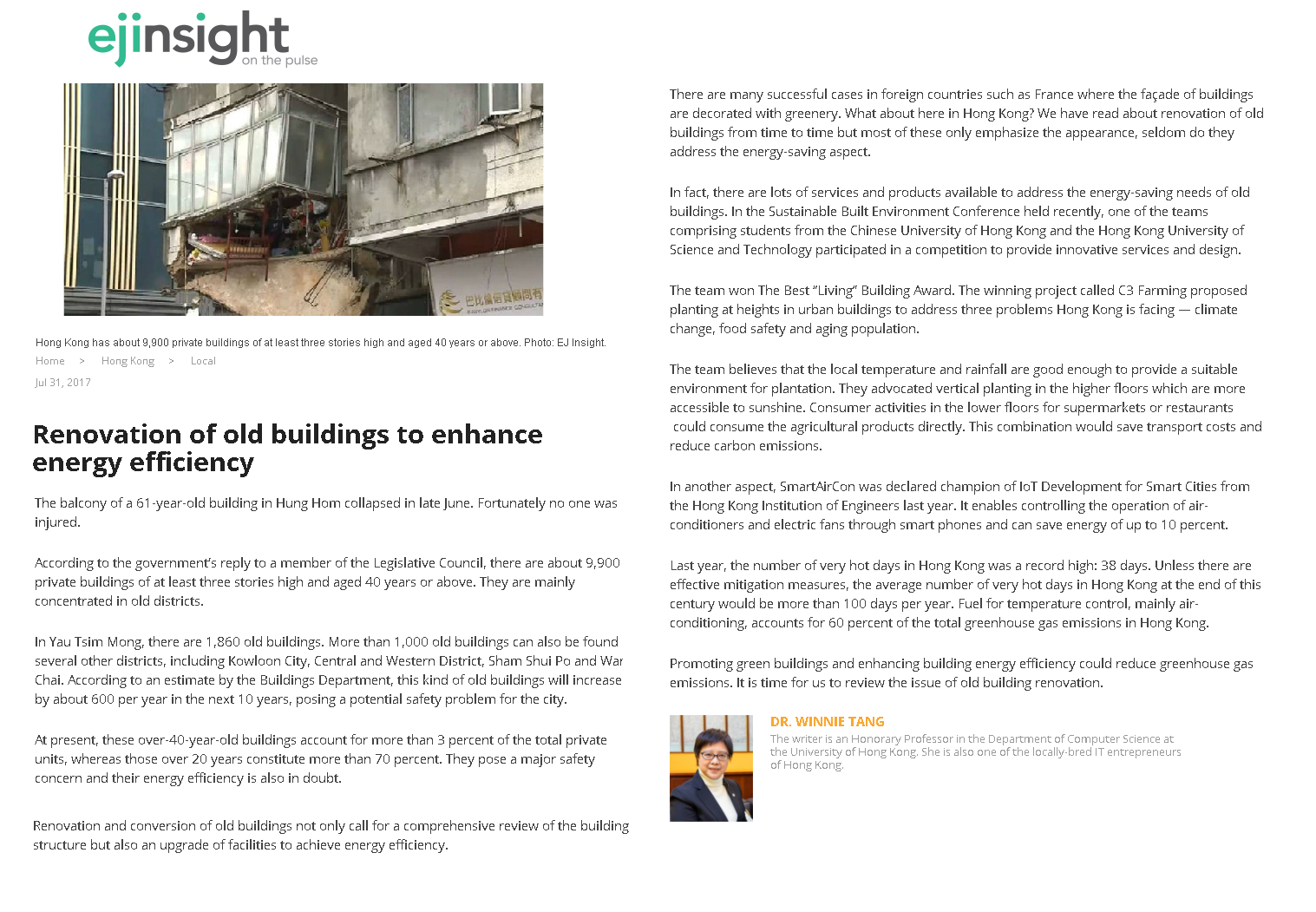網上版請按此

Renovation of old buildings to enhance energy efficiency
The balcony of a 61-year-old building in Hung Hom collapsed in late June. Fortunately no one was injured.
According to the government's reply to a member of the Legislative Council, there are about 9,900 private buildings of at least three stories high and aged 40 years or above. They are mainly concentrated in old districts.
In Yau Tsim Mong, there are 1,860 old buildings. More than 1,000 old buildings can also be found in several other districts, including Kowloon City, Central and Western District, Sham Shui Po and Wan Chai. According to an estimate by the Buildings Department, this kind of old buildings will increase by about 600 per year in the next 10 years, posing a potential safety problem for the city.
At present, these over-40-year-old buildings account for more than 3 percent of the total private units, whereas those over 20 years constitute more than 70 percent. They pose a major safety concern and their energy efficiency is also in doubt.
Renovation and conversion of old buildings not only call for a comprehensive review of the building structure but also an upgrade of facilities to achieve energy efficiency.
There are many successful cases in foreign countries such as France where the façade of buildings are decorated with greenery. What about here in Hong Kong? We have read about renovation of old buildings from time to time but most of these only emphasize the appearance, seldom do they address the energy-saving aspect.
In fact, there are lots of services and products available to address the energy-saving needs of old buildings. In the Sustainable Built Environment Conference held recently, one of the teams comprising students from the Chinese University of Hong Kong and the Hong Kong University of Science and Technology participated in a competition to provide innovative services and design.
The team won The Best “Living” Building Award. The winning project called C3 Farming proposed planting at heights in urban buildings to address three problems Hong Kong is facing — climate change, food safety and aging population.
The team believes that the local temperature and rainfall are good enough to provide a suitable environment for plantation. They advocated vertical planting in the higher floors which are more accessible to sunshine. Consumer activities in the lower floors for supermarkets or restaurants could consume the agricultural products directly. This combination would save transport costs and reduce carbon emissions.
In another aspect, SmartAirCon was declared champion of IoT Development for Smart Cities from the Hong Kong Institution of Engineers last year. It enables controlling the operation of air-conditioners and electric fans through smart phones and can save energy of up to 10 percent.
Last year, the number of very hot days in Hong Kong was a record high: 38 days. Unless there are effective mitigation measures, the average number of very hot days in Hong Kong at the end of this century would be more than 100 days per year. Fuel for temperature control, mainly air-conditioning, accounts for 60 percent of the total greenhouse gas emissions in Hong Kong.
Promoting green buildings and enhancing building energy efficiency could reduce greenhouse gas emissions. It is time for us to review the issue of old building renovation.
Dr. Winnie Tang
Honorary Professor, Department of Computer Science, The University of Hong Kong